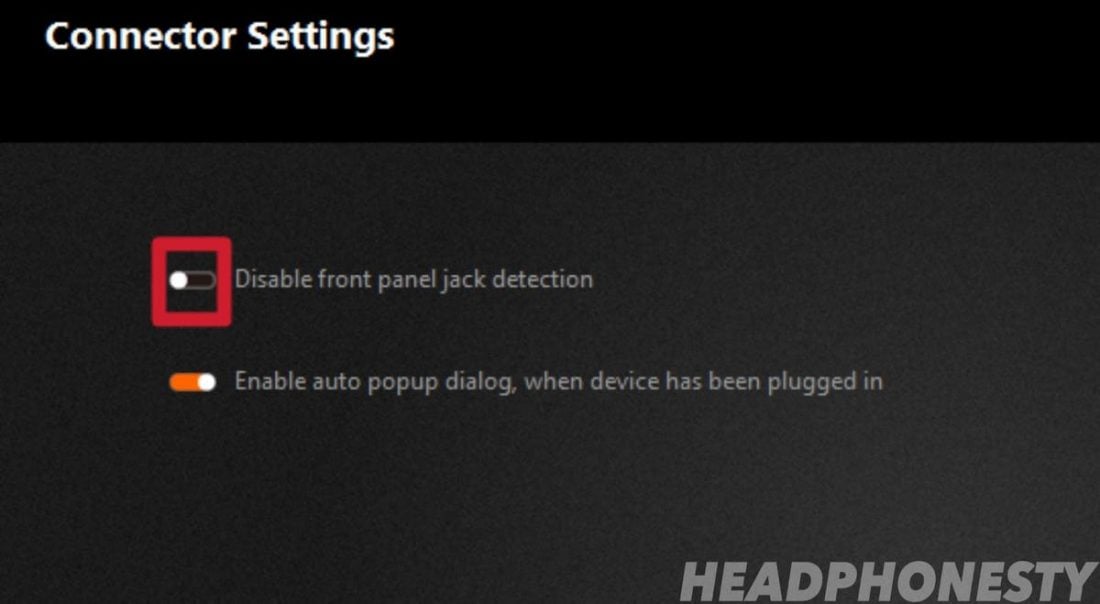
- Realtek alc1150 jack sensing how to#
- Realtek alc1150 jack sensing drivers#
- Realtek alc1150 jack sensing update#
- Realtek alc1150 jack sensing driver#
- Realtek alc1150 jack sensing full#
Realtek alc1150 jack sensing driver#
And the Realtek HD Audio Manager is their best audio driver which can be used on all Windows 10 computer irrespective of the manufacturer as it is a universal driver.
Realtek alc1150 jack sensing drivers#
Realtek has developed various universal drivers for Windows 10 computer including things like network drivers and audio drivers.

Change Audio Format of Audio Output in Windows 10 Disable Audio Enhancements in Windows 10 Sounds Settings
Realtek alc1150 jack sensing update#
Update Realtek HD Audio Manager Drivers in Windows 10 Change Default Playback Device to Realtek Audio
Realtek alc1150 jack sensing how to#

"ROG Audio" (the precursor to "SupremeFX Audio") was basically just an ASUS-programmed ALC1150.
Realtek alc1150 jack sensing full#
Windows-optimized (Vista/7/8/10) software-controlled power status monitor and controls (with 0.75dB volume stepping, +10dB/+20dB/+30dB gain boost, Dolby TrueHD and LPCM emulation)Ĥ8-pin QFN "Green" package with 1.5V/2.3V/3.0V/3.3V/3.8V/5.0V electrical interfaces, full Intel Low-Power ECR () compliance, integrated whole-package LDO, HD Audio Link, DTS, optical/SPDIF, I2S bus, 2 GPIO pins Intel HD Audio () support (PCM up to 32k/44.1k/48k/88.2k/96k/192kHz sampling rates and 16-/20-/24-bit resolutions), legacy analog support, legacy (Realtek) codec supportġ0 output DACs (primary 8-channel 7.1 Surround playback at 115dB/96dB SNR, secondary 2-channel independent Stereo "multiple streaming" playback at 110dB/93dB SNR)Ģ input ADCs (Stereo mic at 104dB SNR with software-controlled Acoustic Echo Cancellation, Beam Forming, Noise Suppression)Ĩ retaskable analog I/O jacks (with three jack sense/detection pins, three analog output amplifiers, four analog input amplifiers, "anti-pop" mode output support)įull Rate Lossless Content Protection DRM firmware (for I2S, streaming, software media, CD, DVD, HD-DVD, and Blu-Ray playback) ALC1150 chips are used in USB gizmos, low-cost PC audio cards, high-cost PC motherboards, "professional" instruments and audio consoles, and a wide variety of consumer appliances. The ALC1150 admittedly has a bit of tainted rep with gamers and audiophiles - because it's never going to outperform a proper dedicated sound card - but it has truly excellent specs, it's fairly robust, it's cheap (in bulk, anyhow), it's well supported (if you're an OEM, anyhow), it's highly customizable and it's surprisingly versatile. The heart of "SupremeFX" is an ASUS-programmed Realtek ALC1150 10-Channel HD Audio Codec ().


 0 kommentar(er)
0 kommentar(er)
